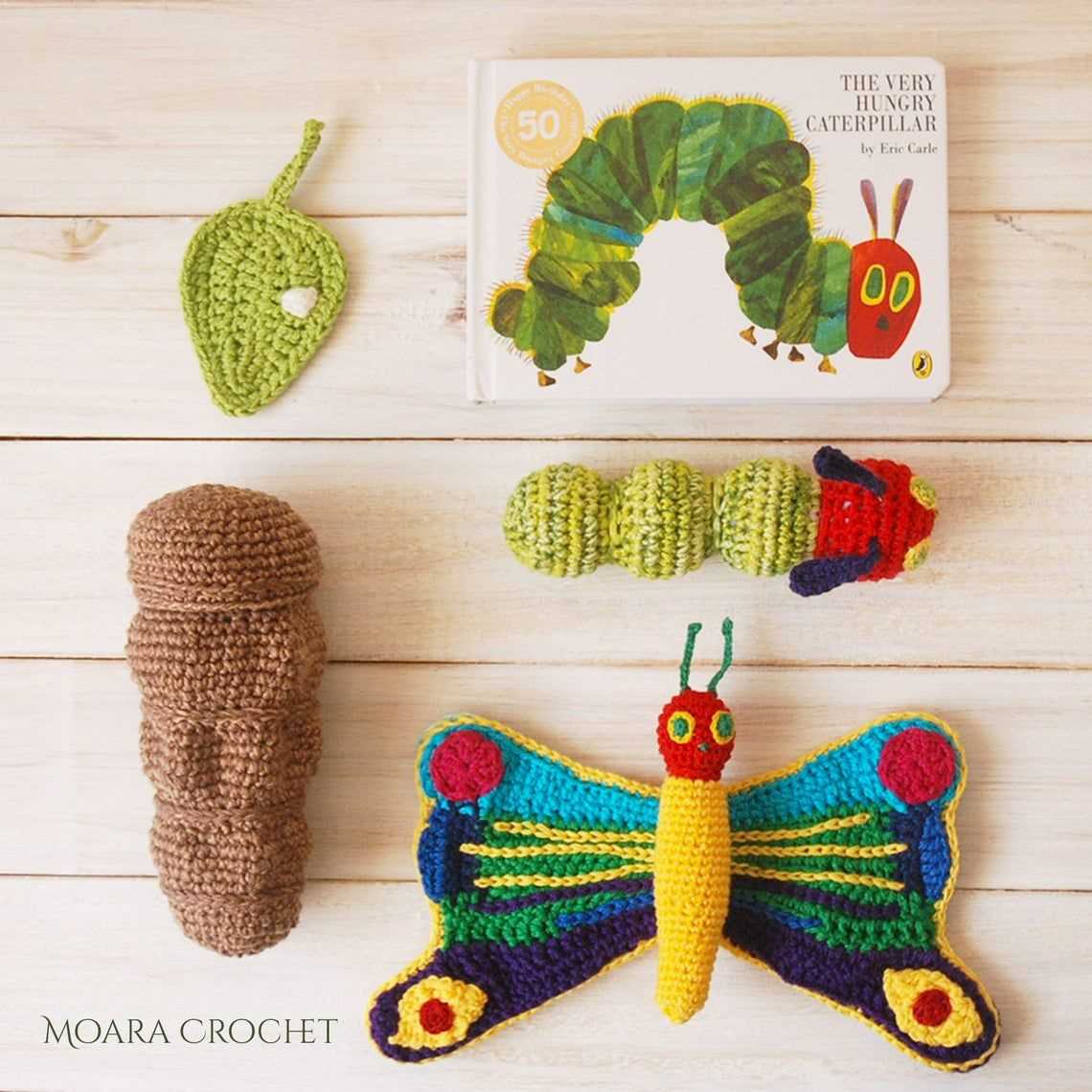
Are you a fan of the beloved children’s book “The Very Hungry Caterpillar” by Eric Carle? If so, we have an exciting project for you! We have created a free knitting pattern inspired by this classic story, allowing you to bring the adorable caterpillar to life with your own needles and yarn.
This knitting pattern is perfect for beginners and experienced knitters alike. With clear and detailed instructions, you’ll be able to create a cute and cuddly caterpillar that will delight children and adults alike. The finished project will make a wonderful toy or decoration and can even be used as a teaching tool to help little ones learn about counting, days of the week, and healthy eating.
To complete this project, you will need basic knitting skills, such as casting on, knitting, purling, and decreasing. You will also need a set of double-pointed knitting needles and a variety of colorful yarns. The pattern includes step-by-step instructions, as well as helpful tips and suggestions to ensure your finished caterpillar turns out just right.
Materials needed
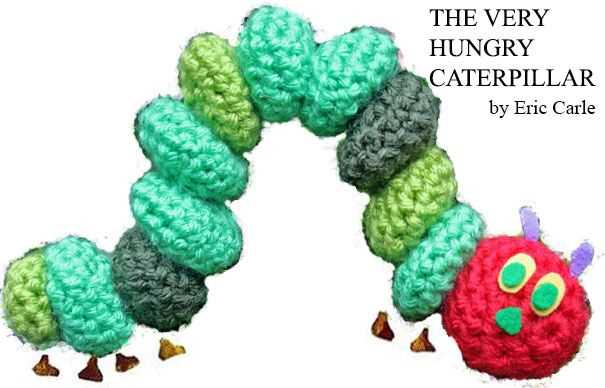
Before you start knitting the very hungry caterpillar, make sure you have all the necessary materials. Here is a list of what you will need:
- Yarn: You will need green, red, yellow, and white yarn. Choose a soft and lightweight yarn that is suitable for knitting.
- Knitting needles: Use knitting needles in a size appropriate for your chosen yarn. It is recommended to use double-pointed needles for easier knitting in the round.
- Tapestry needle: This needle will be used for weaving in ends and sewing any necessary parts together.
- Stuffing: You will need polyester stuffing or any other type of stuffing material to fill the caterpillar’s body.
- Scissors: A pair of sharp scissors will be needed for cutting the yarn and trimming any excess.
- Markers: Use stitch markers to help keep track of your stitches and rounds.
Once you have gathered all the necessary materials, you will be ready to start knitting the very hungry caterpillar. Make sure to check the pattern for any additional requirements or instructions specific to the design.
Gauge and Sizing
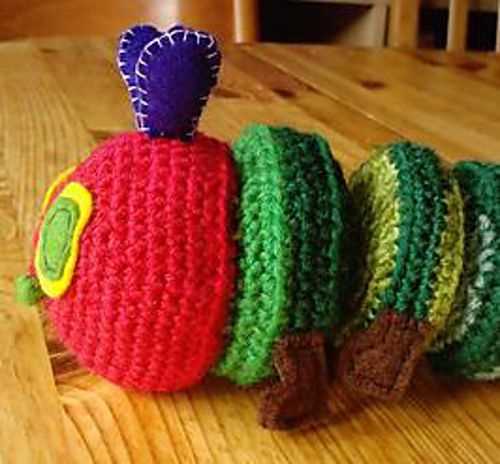
When knitting the Very Hungry Caterpillar pattern, it’s important to achieve the correct gauge in order to ensure that the finished project has the intended dimensions. The gauge refers to the number of stitches and rows that are knit within a specific measurement. The gauge for this pattern is 20 stitches and 28 rows in a 4-inch square using US size 6 (4mm) knitting needles.
Before starting the project, it is recommended to knit a gauge swatch to check if your tension matches the gauge provided. To do this, cast on 20 stitches and knit in stockinette stitch for 28 rows. Once you have completed the swatch, measure the square by placing a ruler or measuring tape over it. If your swatch does not match the recommended gauge, you may need to adjust your needle size and try again until you achieve the correct tension.
The Very Hungry Caterpillar pattern is available in multiple sizes, ranging from newborn to adult. It includes detailed instructions for each size, specifying the number of stitches and rows needed to create the different parts of the caterpillar. It is important to follow the instructions for the size you wish to knit in order to ensure the correct proportions of the finished project.
If you are unsure about which size to choose, it is recommended to measure the recipient or consult a size chart for guidance. Keep in mind that knitting gauge can vary slightly between individuals, so it is always best to rely on actual measurements rather than assuming a specific size based on age or clothing size.
- Size Chart:
- Newborn: 14 inches
- Baby: 16 inches
- Toddler: 18 inches
- Child: 20 inches
- Teen/Adult: 22 inches
By ensuring your gauge matches the pattern and selecting the appropriate size, you can confidently knit the Very Hungry Caterpillar pattern and create a beautiful caterpillar toy or decoration.
Abbreviations
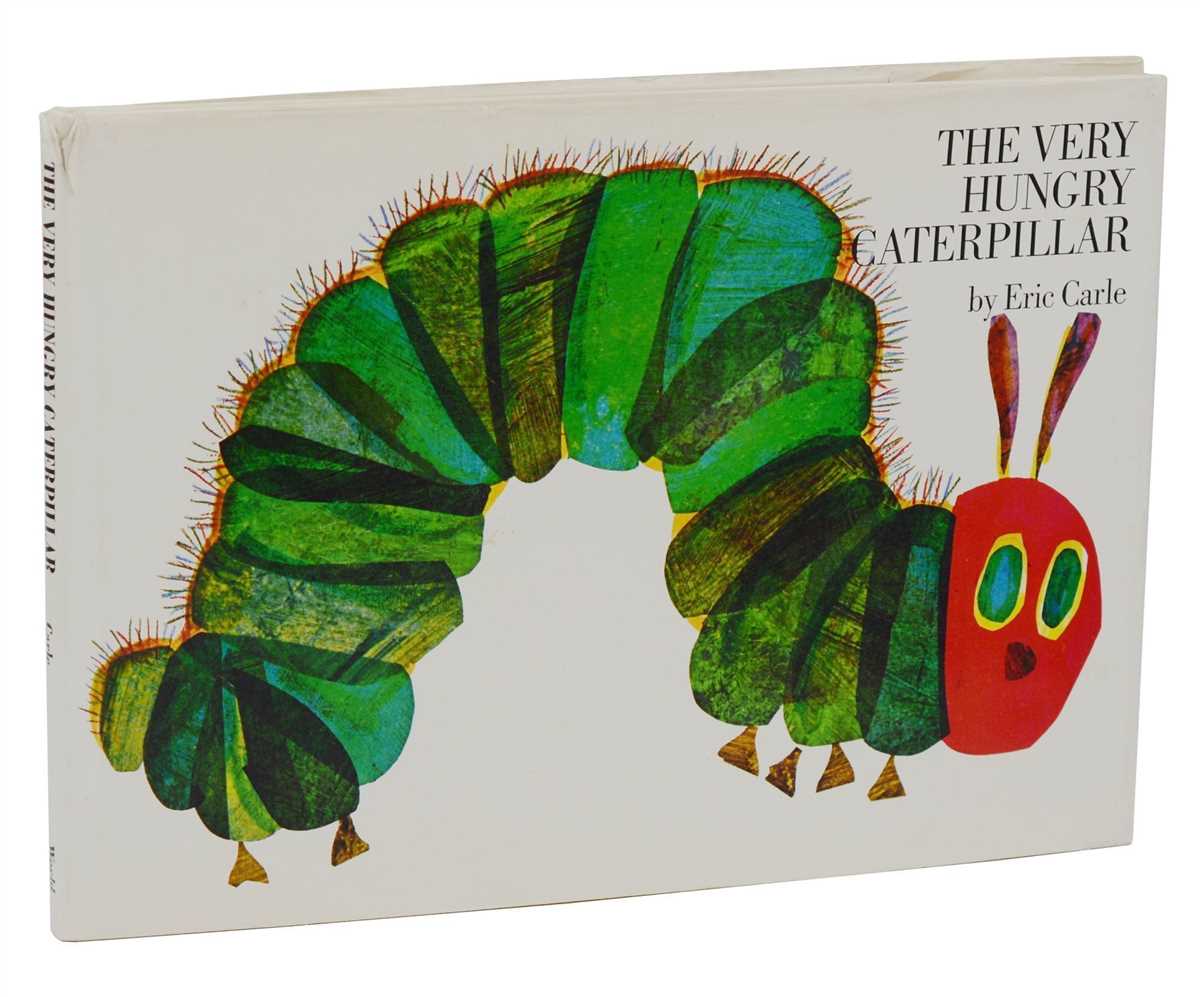
In knitting patterns, abbreviations are used to make the instructions more concise and easier to follow. Familiarizing yourself with these abbreviations will help you understand the pattern better and complete your project successfully.
Here are some common abbreviations you may encounter in a free knitting pattern for the Very Hungry Caterpillar:
- K – knit
- P – purl
- YO – yarn over
- K2tog – knit two stitches together
- SSK – slip, slip, knit (slip two stitches knitwise, then knit them together)
- RS – right side (the side of the work facing you)
- WS – wrong side (the side of the work facing away from you)
These are just a few examples of the abbreviations you may come across in knitting patterns. It’s important to refer to the pattern’s key or glossary if you’re unsure about any abbreviation.
Body of the caterpillar
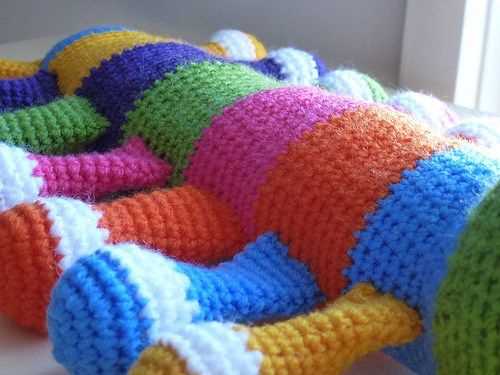
The body of the caterpillar is made up of several segments, each representing a different stage of its growth. To create the body, you will need to cast on a certain number of stitches and work in a combination of knitting and purling stitches to create a rib pattern that resembles the caterpillar’s distinct textured skin.
If you are new to knitting, don’t worry! This pattern is suitable for beginners and includes detailed instructions to guide you through each step. You will need to use a pair of size 4mm knitting needles and a DK weight yarn in green or your preferred color.
Instructions:
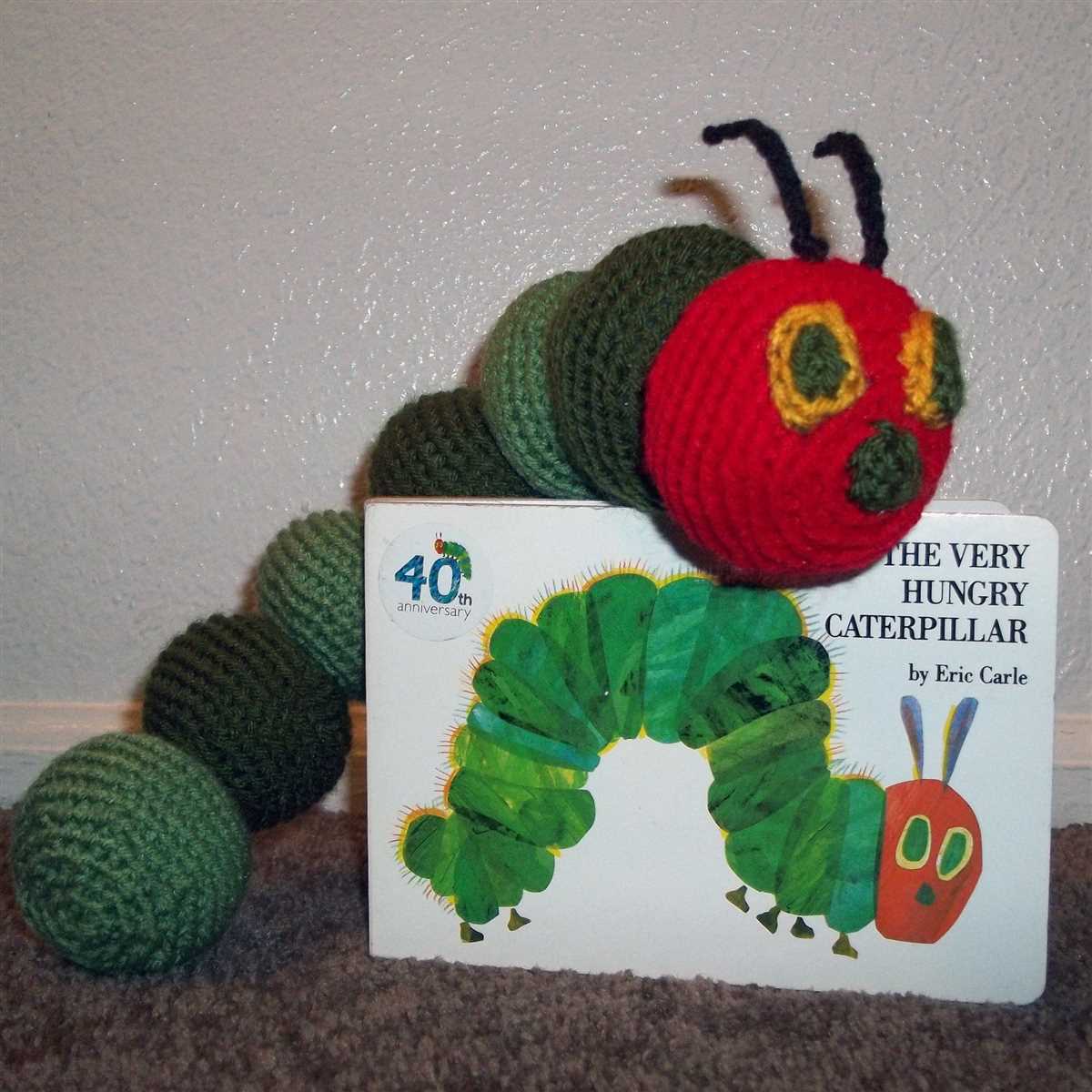
1. Cast on 24 stitches using your preferred cast-on method.
2. Row 1: *Knit 2, purl 2* repeat from * to * until the end of the row.
3. Row 2: *Purl 2, knit 2* repeat from * to * until the end of the row.
4. Repeat rows 1 and 2 until the body of the caterpillar reaches your desired length.
5. Bind off all stitches.
These instructions will create a ribbed pattern that resembles the segmented body of the caterpillar. Adjust the number of stitches and rows to achieve the desired length and width for your caterpillar. You can also experiment with different colors to create a unique and colorful caterpillar.
Legs
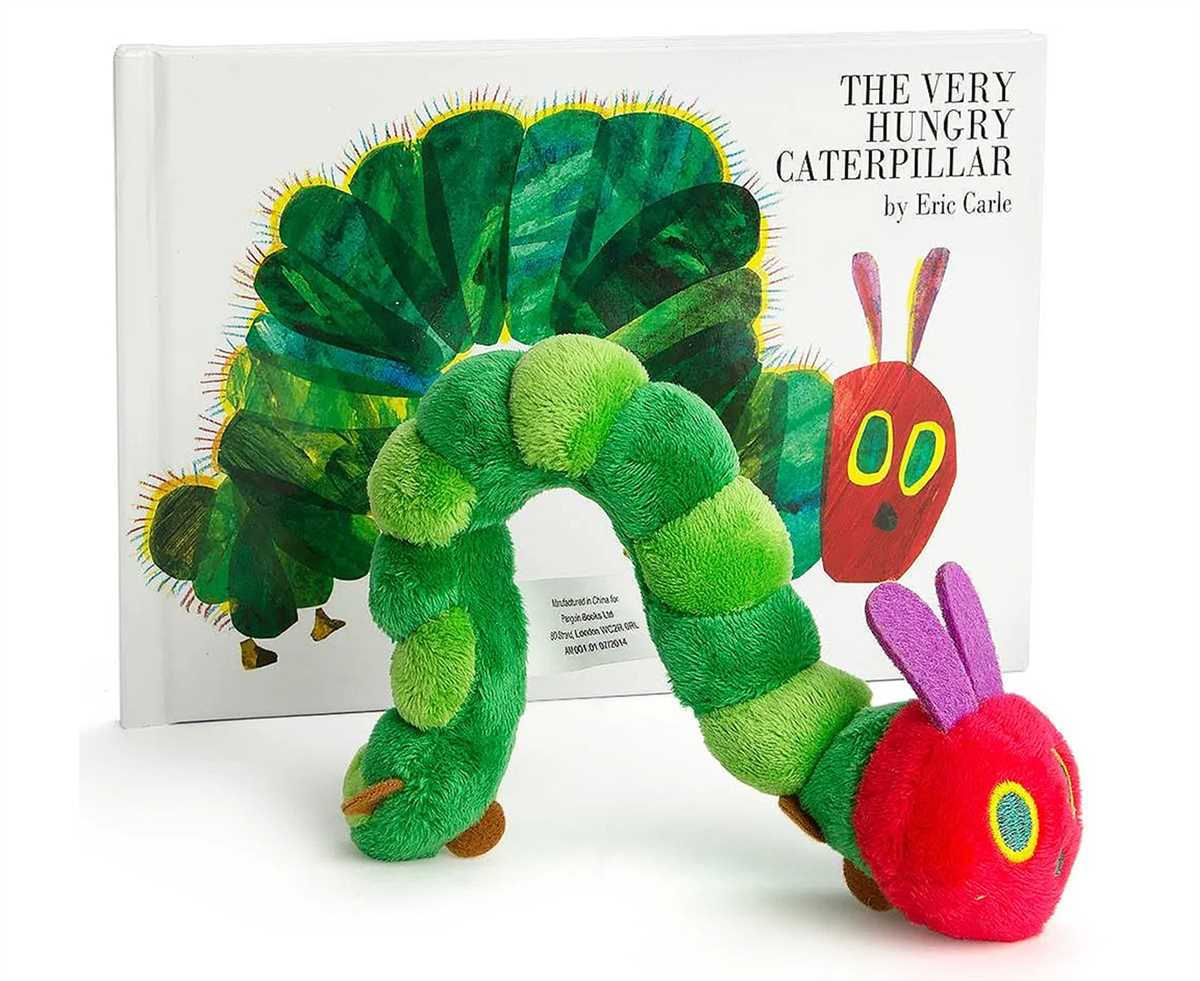
The legs of the Very Hungry Caterpillar are an important part of its transformation. In the beginning, the caterpillar has six tiny legs that allow it to move around and explore its environment. As it grows and eats more, it molts several times, and with each molt, it grows new, stronger legs.
To create the legs for your knitted Very Hungry Caterpillar, you will need to follow the pattern provided. The pattern will guide you through the process of knitting each leg separately and then attaching them to the body of the caterpillar. Make sure to pay attention to the specific instructions for each leg as they may vary slightly.
When knitting the legs, it is important to use the correct yarn and needle size to achieve the desired result. The pattern will indicate the recommended yarn weight and corresponding needle size. Following these recommendations will ensure that your legs turn out the right size and shape.
Once you have completed knitting the legs, you will need to attach them to the body of the caterpillar. This step should be done carefully, making sure to align the legs with the corresponding stitch markers on the body. You can use a yarn needle to sew the legs onto the body securely.
- Knit each leg separately.
- Follow the pattern for specific leg instructions.
- Use the recommended yarn and needle size.
- Attach the legs to the body of the caterpillar.
By carefully following the instructions and using the recommended materials, you will be able to create the perfect legs for your knitted Very Hungry Caterpillar. These legs will not only make your caterpillar look adorable but also add to its overall charm and character.
Antennae
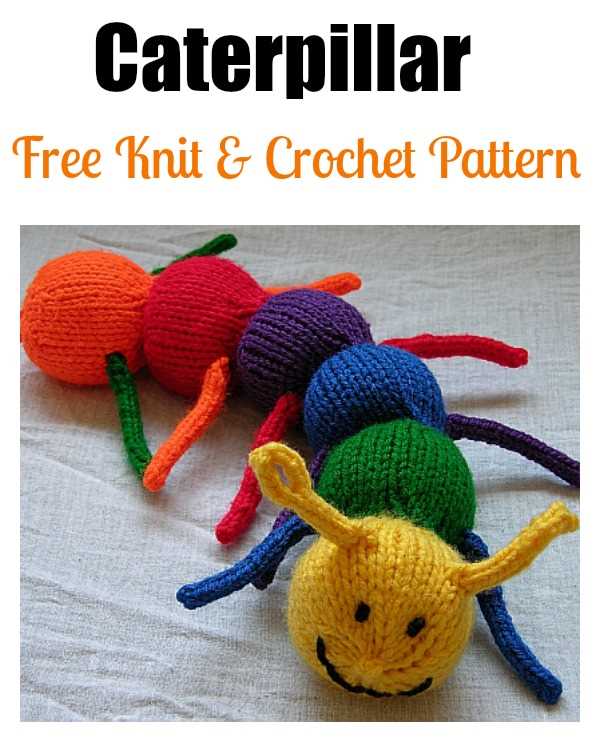
The antennae of a caterpillar play an important role in its sensory perception. These appendages are located on the head of the caterpillar and are often long and slender, resembling tiny whiskers. The antennae are covered in small hair-like structures called sensilla, which house sensory cells that help the caterpillar detect its environment.
The antennae serve a variety of functions for a caterpillar. They are primarily used for detecting and identifying smells, allowing the caterpillar to find food sources, avoid dangers, and locate potential mates. The sensilla on the antennae can detect a wide range of odor molecules, allowing the caterpillar to navigate through its environment based on scent cues.
The antennae are also equipped with specialized cells called proprioceptors, which provide the caterpillar with information about its body position and movement. This helps the caterpillar coordinate its muscles and navigate its surroundings with precision.
Interestingly, the antennae of a caterpillar can regenerate if they are damaged or lost. This remarkable ability allows the caterpillar to continually adapt and respond to changes in its environment. It’s fascinating to see how such a small and seemingly insignificant appendage plays such a crucial role in the life of a caterpillar.
Eyes
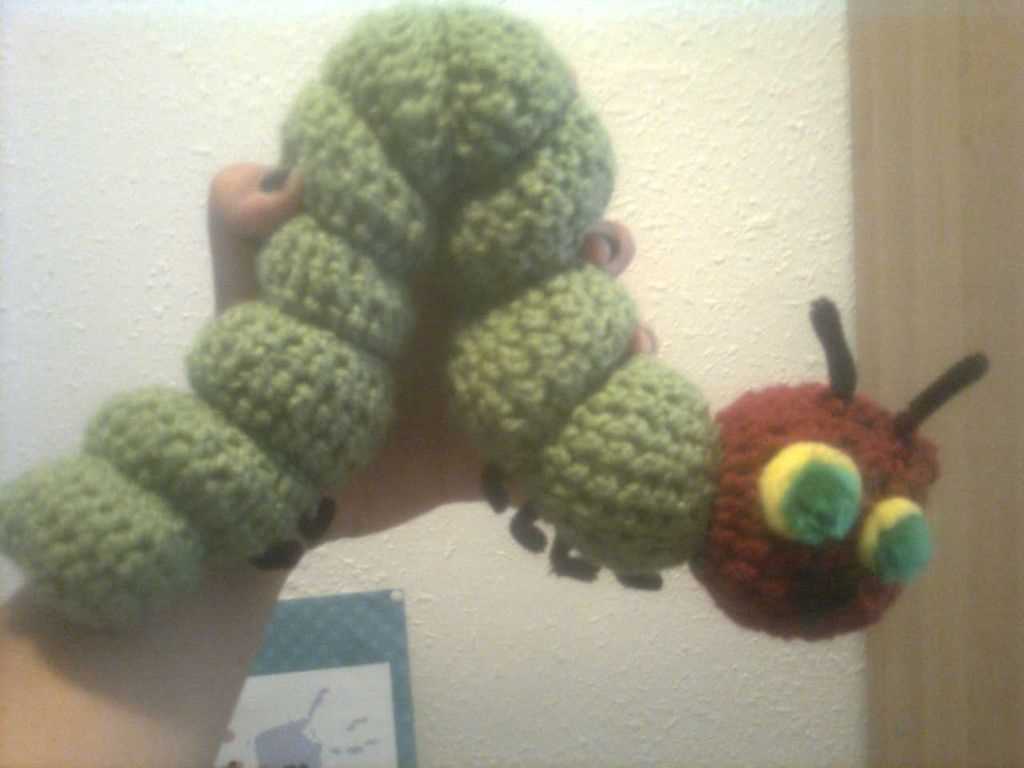
Eyes are a fascinating feature of any creature. They are not only important for vision, but they often serve as a prominent attribute of beauty or expression. Whether it is the piercing gaze of a human, the gleaming eyes of a predator, or the innocent eyes of a newborn, they captivate our attention and convey emotions without words.
The eyes of the very hungry caterpillar are a key element of its charm and playfulness. In the classic children’s book, the caterpillar’s eyes are depicted as large, round orbs that seem to sparkle with curiosity and mischief. They are an integral part of the caterpillar’s character, inviting readers to follow its delightful journey through colorful pages.
In the free knitting pattern for the very hungry caterpillar, the eyes are an essential detail in bringing the caterpillar to life. The pattern provides instructions for creating two small, circular eye patches that can be easily attached to the caterpillar’s body. These eye patches, when finished in bright colors, add a playful and joyful touch to the toy.
As we admire the eyes of creatures around us, we cannot help but wonder about the wonders they have witnessed, the stories they could tell, and the emotions they convey. Eyes truly are windows to the soul, inviting us to explore and connect with the world in new and profound ways.
Mouth
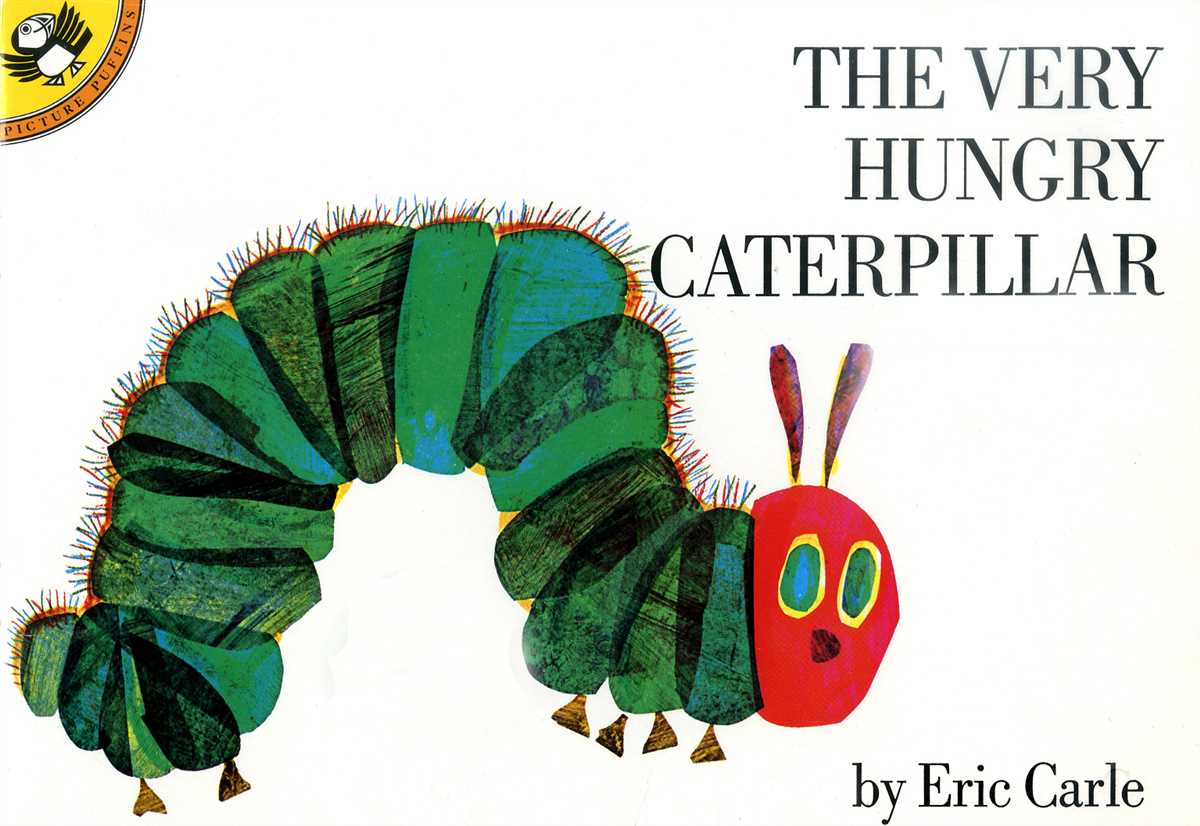
The mouth is a vital part of the human body, as it is responsible for various functions such as eating, speaking, and expressing emotions. It is an opening in the face where food enters and where words and sounds are formed.
The mouth is made up of different structures that work together to perform its functions. The most prominent part of the mouth is the lips, which help in shaping sounds during speech and also play a role in facial expressions. Inside the mouth, there are teeth, which aid in biting and chewing food, and a tongue, which is essential for tasting, swallowing, and forming sounds. The roof of the mouth, known as the palate, separates the oral cavity from the nasal cavity. The back of the mouth leads to the throat and the rest of the digestive and respiratory systems.
During eating, the mouth plays a crucial role in the first stage of digestion. The teeth break down food into smaller pieces, and saliva, produced by salivary glands in the mouth, moistens the food to make it easier to swallow. The tongue helps in manipulating food while chewing and pushes it back for swallowing. The muscles of the mouth and throat then aid in the movement of food through the digestive system.
Additionally, the mouth is a powerful tool for communication. Through speech, the mouth helps in expressing thoughts, ideas, and emotions. The tongue, lips, and teeth work together to articulate different sounds and form words. The movement of the mouth muscles and the breath control from the lungs create different sounds, allowing for effective communication with others.
In conclusion, the mouth is not just a simple opening in the face. Its complex structures and functions make it an essential part of our everyday lives, whether it is for eating, speaking, or expressing ourselves. It is a valuable asset that should be taken care of through proper oral hygiene practices.
Assembly
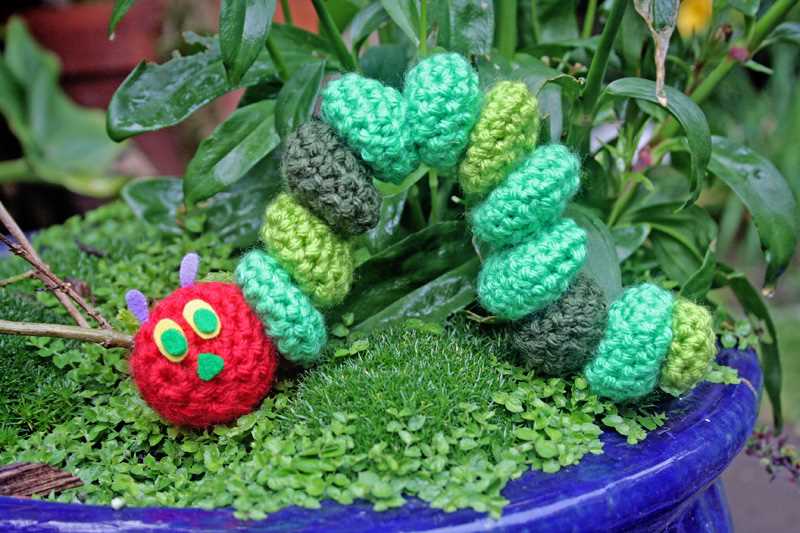
Once you have finished knitting all the pieces, it’s time to assemble your very hungry caterpillar! Follow the steps below to put everything together:
-
Body: Start by seaming the body pieces together. Lay the two body pieces with the right sides facing each other and use a mattress stitch to sew along the sides. Leave the bottom open for stuffing.
-
Stuffing: Fill the body of the caterpillar with polyester stuffing until it is plump and soft. Make sure to evenly distribute the stuffing to give the caterpillar a rounded shape.
-
Antennae and Legs: Attach the pre-knit antennae and legs to the body of the caterpillar. Use a tapestry needle and matching yarn to sew them in place securely.
-
Eyes: Sew the two eyes onto the caterpillar’s face. You can position them according to your preference, but they should be placed on the same row as the antennae.
-
Mouth: Embroider the caterpillar’s smiling mouth below the eyes. You can use a backstitch or any other desired embroidery stitch for this step.
-
Nose: Attach the small triangular nose to the center of the mouth. Sew it securely in place using a needle and matching yarn.
-
Finishing touches: Once everything is securely attached, weave in any loose ends and trim off excess yarn. Give your finished caterpillar a gentle fluff and shape to bring it to life!
Now your very hungry caterpillar is ready to be enjoyed or given as a special handmade gift to someone! Remember to have fun with the assembly process and make it your own.
Finishing Touches
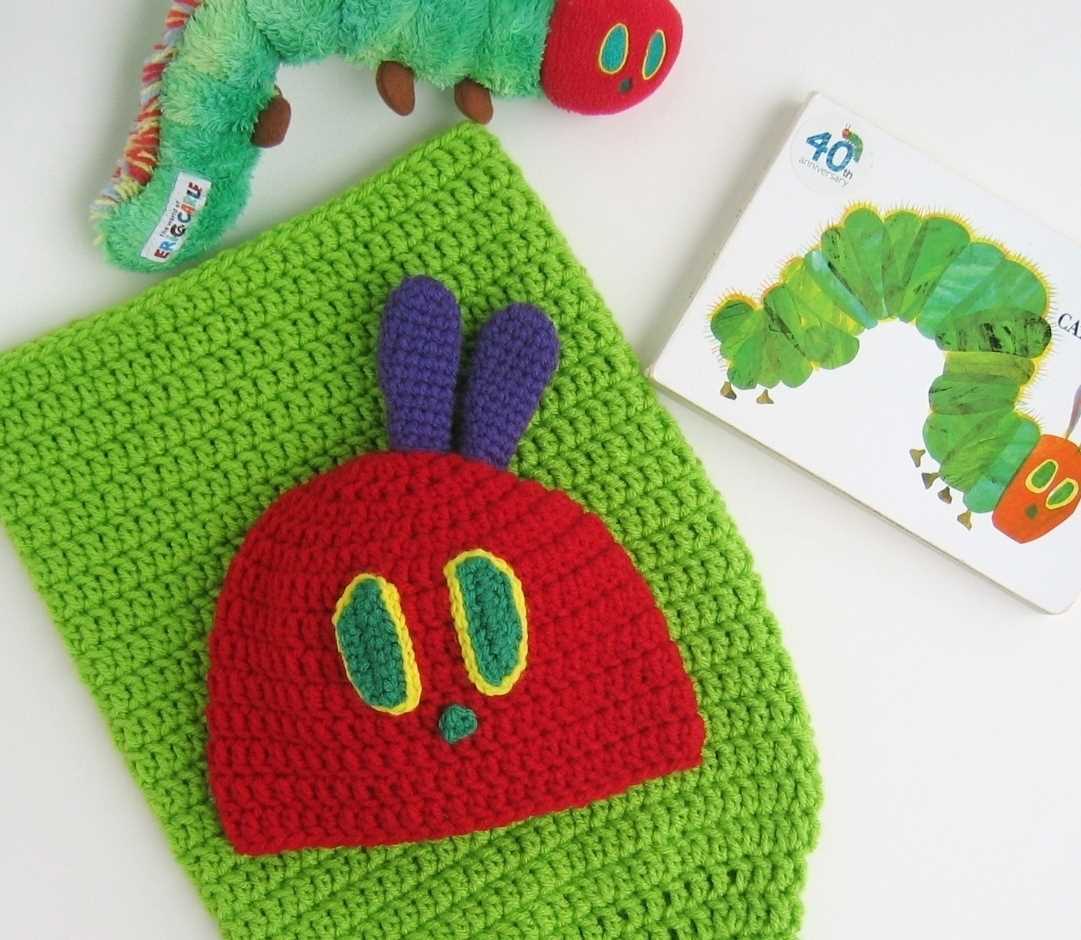
After finishing the knitting portion of the caterpillar, there are a few final touches you can add to bring your project to life.
Embroidered Details: Using black yarn and a tapestry needle, embroider the eyes, mouth, and antennae onto the head of the caterpillar. This will give it a cute and whimsical expression. You can also use red yarn to embroider the nose and any other details you’d like to add.
Stuffing: Once you’ve completed the knitting, stuff the caterpillar firmly with polyester fiberfill or the stuffing of your choice. Make sure to stuff the head and body evenly to maintain its shape.
Seaming: Use a tapestry needle and the mattress stitch to seam the edges of the caterpillar. Start by seaming the body, leaving a small opening for stuffing. Once the body is seamed, stuff the caterpillar and continue seaming until the entire caterpillar is closed.
Woven Threads: To give the caterpillar a textured appearance, you can use a tapestry needle to weave threads in contrasting colors along the body. This will create the appearance of segments and add visual interest to the finished caterpillar.
Finishing: Once all the details are in place, weave in any remaining loose ends of yarn and trim them neatly. Give your caterpillar a final inspection to ensure everything is secure and well-finished.
With these finishing touches, your very hungry caterpillar knitting project is complete! This adorable toy will make a wonderful gift or a cherished addition to your own collection.